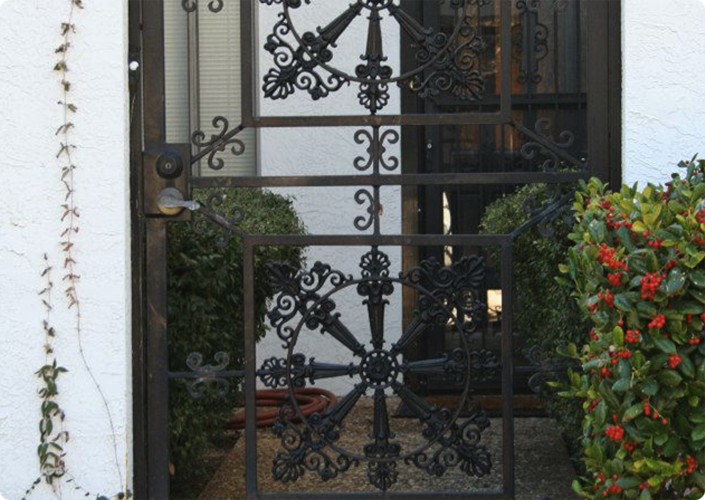Understanding the Benefits and Applications of Cast Iron Castings in Modern Industry
The Evolution and Importance of Cast Iron Castings
Cast iron castings have long been a fundamental component in various industries due to their unique properties and versatility. Dating back to ancient times, the process of casting iron has evolved significantly, transforming both the aesthetics and functionality of numerous products we rely on today.
Historical Background
The use of cast iron can be traced back to China during the Han Dynasty (around 200 BC), where it was used for various applications, including cookware and weaponry. Over the centuries, the manufacturing techniques underwent substantial improvements. By the 18th century, it gained popularity in Europe, leading to innovations such as the creation of the first cast iron bridges and infrastructure. The Industrial Revolution marked a turning point for cast iron castings, as advancements in metallurgy and manufacturing processes allowed for mass production, leading to their widespread use in steam engines, machinery, and housing structures.
Properties of Cast Iron
Cast iron is predominantly composed of iron, carbon, and silicon, which contribute to its distinctive characteristics. One of the most notable properties is its excellent castability, which enables intricate shapes and designs that are difficult to achieve with other materials. Cast iron also exhibits high wear resistance and excellent mechanical properties, making it suitable for heavy-duty applications. Additionally, it possesses excellent thermal conductivity, making it an ideal material for cookware, such as frying pans and Dutch ovens.
Types of Cast Iron
There are several types of cast iron, each tailored for specific applications
. The most common types include1. Gray Cast Iron Known for its excellent machinability and wear resistance, gray cast iron is widely used in automotive engine blocks, pipes, and machine bases. 2. Ductile Cast Iron Also known as nodular or spheroidal graphite iron, ductile cast iron has enhanced tensile strength and ductility, making it ideal for applications requiring high impact resistance and performance, such as in automotive components and industrial machinery.
cast iron castings

3. White Cast Iron This type is characterized by its hard, brittle nature and is often used for wear-resistant surfaces and applications like grinding balls.
4. Malleable Cast Iron Produced through a heat treatment process, malleable cast iron offers improved ductility and is often used in fittings and structural components.
Applications in Modern Industry
Cast iron castings are ubiquitous in modern industry. They are utilized in the manufacturing of automotive parts, industrial machinery, plumbing supplies, cookware, and artistic sculptures. The food industry also relies heavily on cast iron for its ability to withstand high temperatures and conduct heat evenly.
Environmental Impact and Sustainability
As industries evolve, the focus on sustainability and environmental impact has led to innovations in the casting process, promoting recycling and reduced energy consumption. Manufacturers are increasingly adopting eco-friendly practices, such as utilizing scrap metal in their production.
Conclusion
In summary, cast iron castings have played a pivotal role in industrial development and continue to be indispensable across various sectors. Their unique properties, combined with ongoing advancements in technology and sustainability practices, ensure that cast iron will remain a crucial material for future innovations. As we move forward, it is essential to appreciate the historical significance and modern applications of cast iron, recognizing its contribution to both industrial progress and daily life.
-
Wrought Iron Components: Timeless Elegance and Structural StrengthNewsJul.28,2025
-
Window Hardware Essentials: Rollers, Handles, and Locking SolutionsNewsJul.28,2025
-
Small Agricultural Processing Machines: Corn Threshers, Cassava Chippers, Grain Peelers & Chaff CuttersNewsJul.28,2025
-
Sliding Rollers: Smooth, Silent, and Built to LastNewsJul.28,2025
-
Cast Iron Stoves: Timeless Heating with Modern EfficiencyNewsJul.28,2025
-
Cast Iron Pipe and Fitting: Durable, Fire-Resistant Solutions for Plumbing and DrainageNewsJul.28,2025
-
 Wrought Iron Components: Timeless Elegance and Structural StrengthJul-28-2025Wrought Iron Components: Timeless Elegance and Structural Strength
Wrought Iron Components: Timeless Elegance and Structural StrengthJul-28-2025Wrought Iron Components: Timeless Elegance and Structural Strength -
 Window Hardware Essentials: Rollers, Handles, and Locking SolutionsJul-28-2025Window Hardware Essentials: Rollers, Handles, and Locking Solutions
Window Hardware Essentials: Rollers, Handles, and Locking SolutionsJul-28-2025Window Hardware Essentials: Rollers, Handles, and Locking Solutions -
 Small Agricultural Processing Machines: Corn Threshers, Cassava Chippers, Grain Peelers & Chaff CuttersJul-28-2025Small Agricultural Processing Machines: Corn Threshers, Cassava Chippers, Grain Peelers & Chaff Cutters
Small Agricultural Processing Machines: Corn Threshers, Cassava Chippers, Grain Peelers & Chaff CuttersJul-28-2025Small Agricultural Processing Machines: Corn Threshers, Cassava Chippers, Grain Peelers & Chaff Cutters












